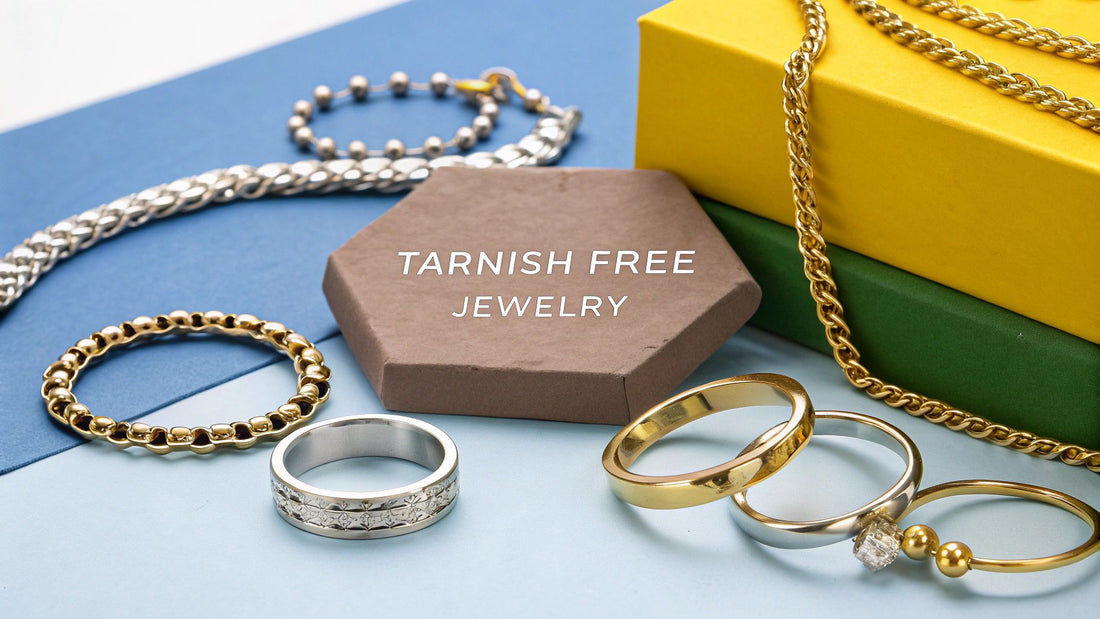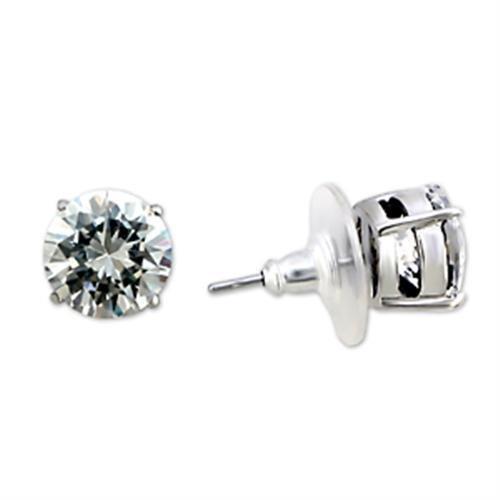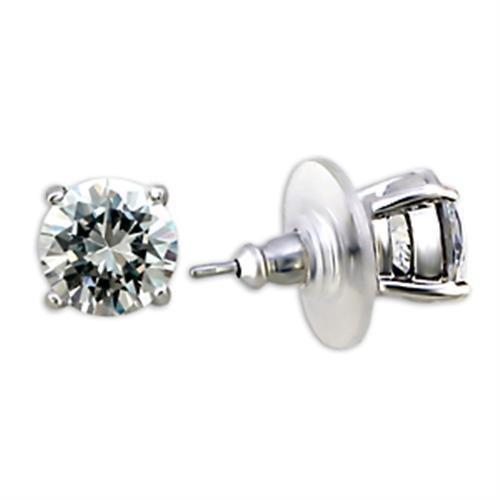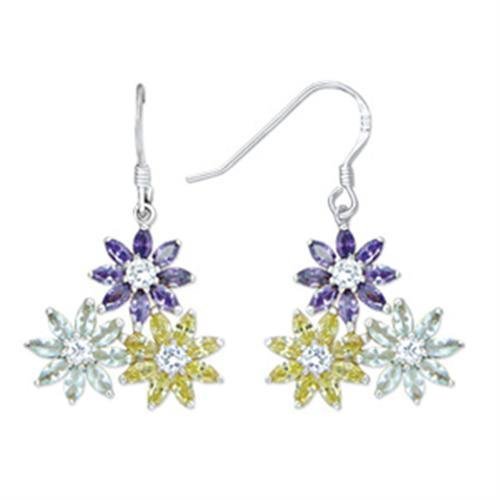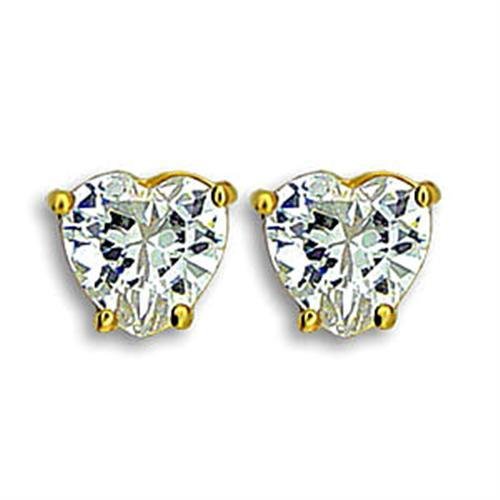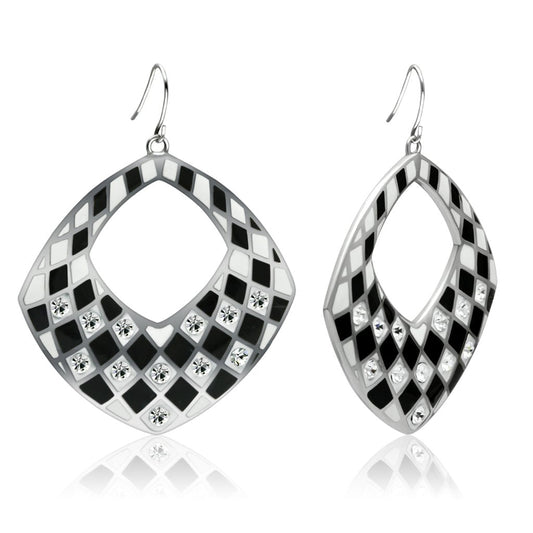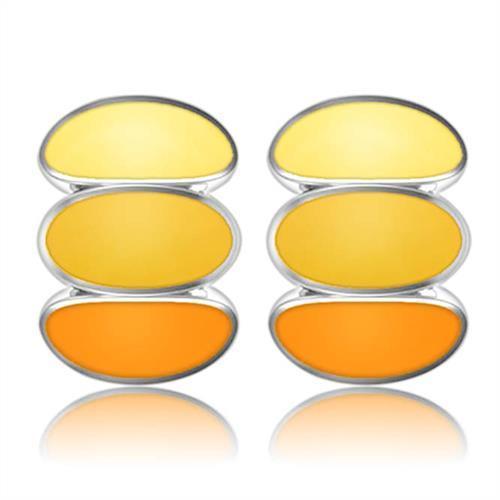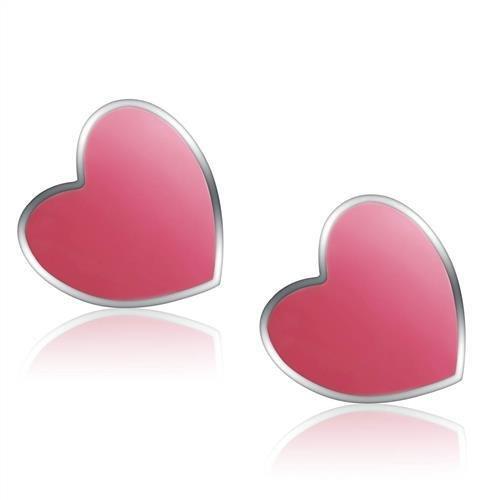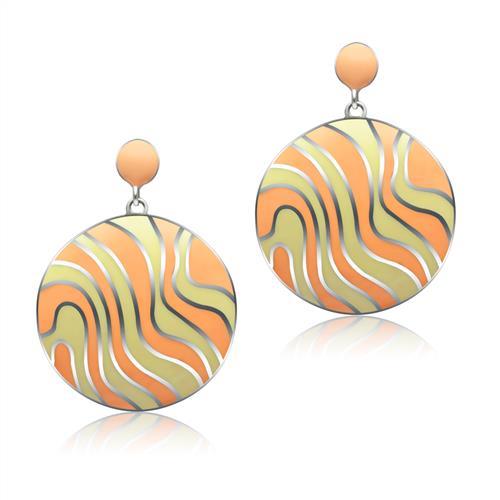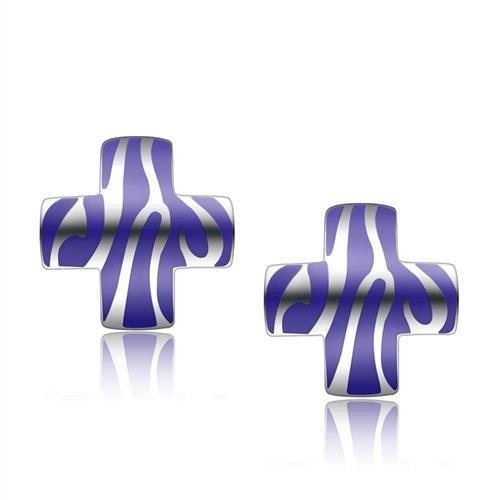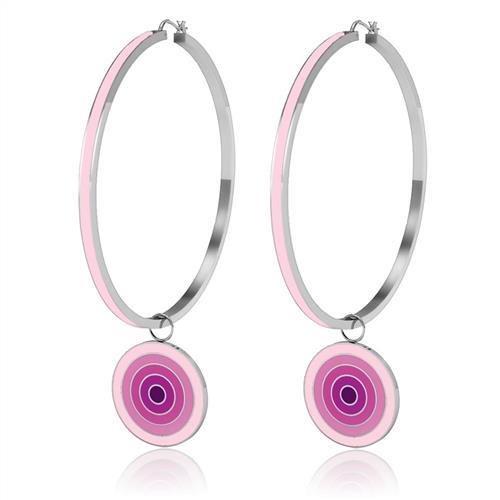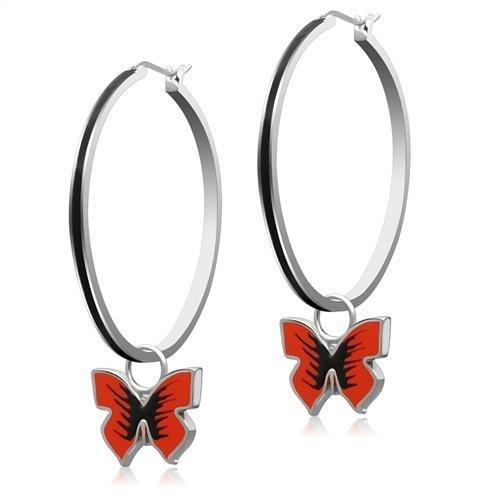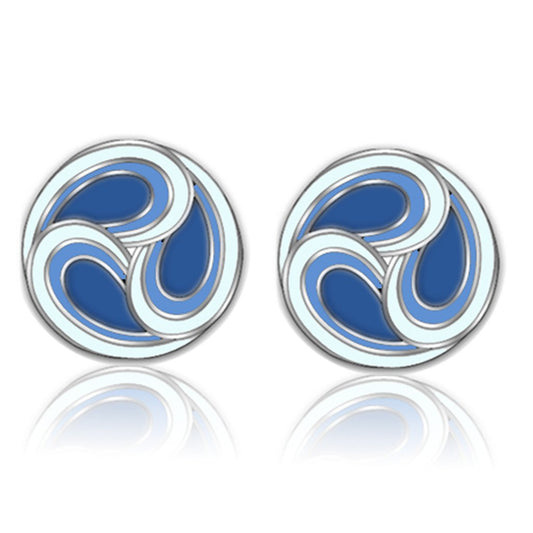Ever noticed that favorite silver ring of yours slowly turning a bit dark, or maybe even leaving a faint greenish mark on your skin? That's tarnishing—a totally natural chemical reaction where metals react with elements in the air and on your skin in a process called oxidation.
But here's the good news: you can avoid it completely. Tarnish-free jewelry is specifically designed to sidestep this issue. It does this in one of two ways: it's either made from materials that are naturally immune to oxidation, or it has a tough, protective coating that acts as a shield. This is the secret behind why some pieces need constant polishing while others, like the stunning options at Precious Pulse, stay radiant day in and day out without any fuss.
The Science Of A Lasting Shine
So, what’s the real difference between a piece that tarnishes and one that doesn’t? It all comes down to its chemical stability.
Metals like stainless steel contain chromium, which forms an invisible, self-repairing layer that shields the metal from air and moisture. It’s this built-in defense that makes it a rockstar in the tarnish-free world. You can learn more about the durability of stainless steel necklaces to see why it’s such a top choice for everyday wear.
And if you want to dive deeper into the chemistry, our article on what causes jewelry to tarnish gives a great overview of the science behind it all.
The demand for these low-maintenance pieces is growing fast. In fact, the market for non-tarnish jewelry is expanding at a rate of nearly 11.3% each year, as more and more people choose beautiful accessories without the hassle of constant upkeep.
The image below breaks down the two main paths to achieving that forever-shine.
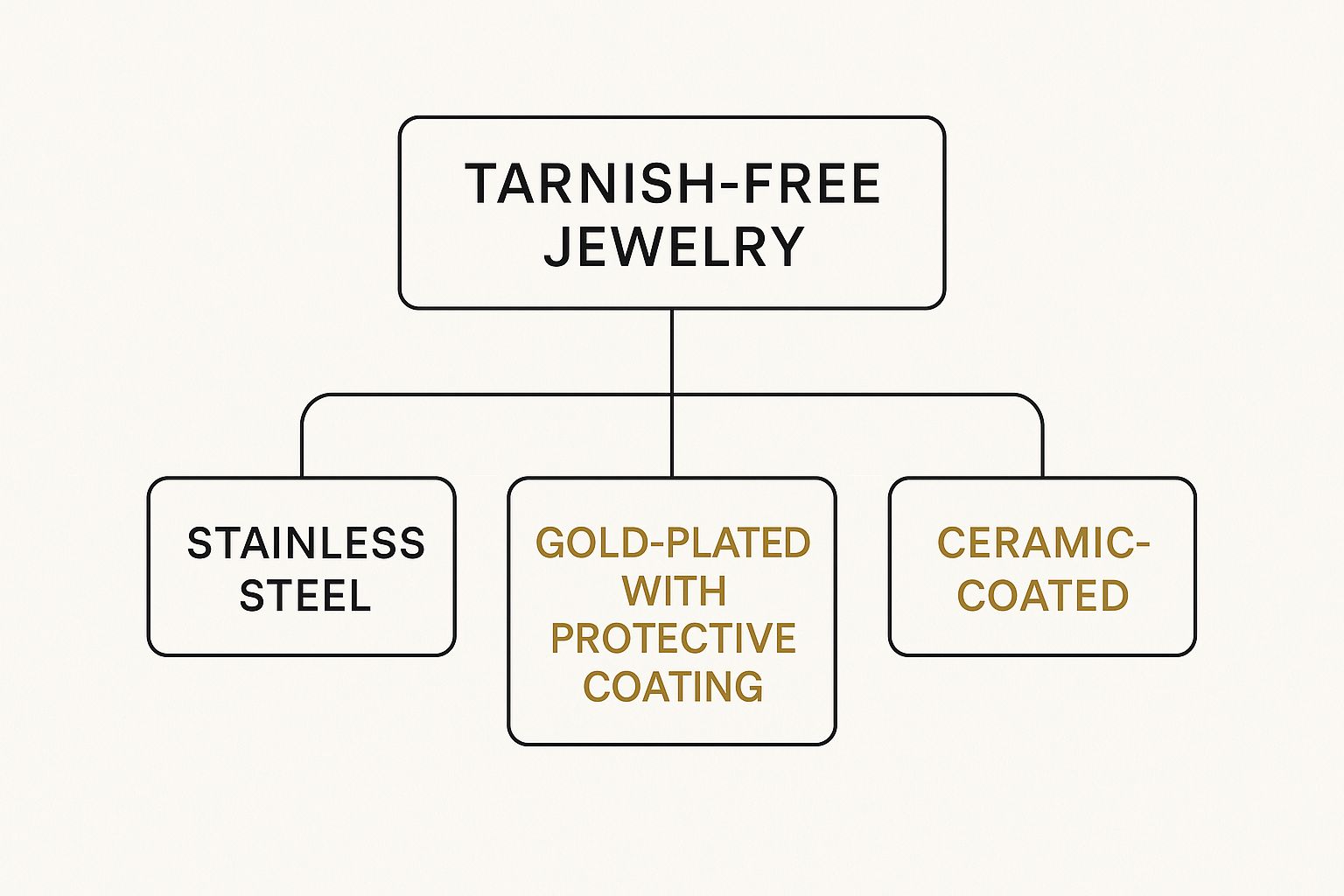
As you can see, a lasting shine comes from either choosing inherently strong materials like stainless steel or using advanced protective coatings on other metals. It’s all about smart material science.
To make things even clearer, let's compare some of the most common materials you'll find.
Quick Guide to Tarnish Resistance in Jewelry
See how different jewelry materials compare in their ability to resist tarnish, helping you choose the best option for your lifestyle.
| Material | Tarnish Resistance Level | Typical Care Needed |
|---|---|---|
| Stainless Steel | Excellent | Very low; occasional wipe-down. |
| Platinum | Excellent | Low; professional polishing every few years. |
| Titanium | Excellent | Very low; resistant to almost everything. |
| 14k/18k Gold | Good | Low; gentle cleaning to remove oils and dirt. |
| Sterling Silver | Poor | High; regular polishing needed to remove tarnish. |
| Gold Plated | Varies | Moderate; depends on plating thickness and base metal. |
Ultimately, understanding these differences helps you invest in pieces that won’t just look good for a week, but will truly stand the test of time and wear.
The Best Materials for Tarnish-Resistant Jewelry
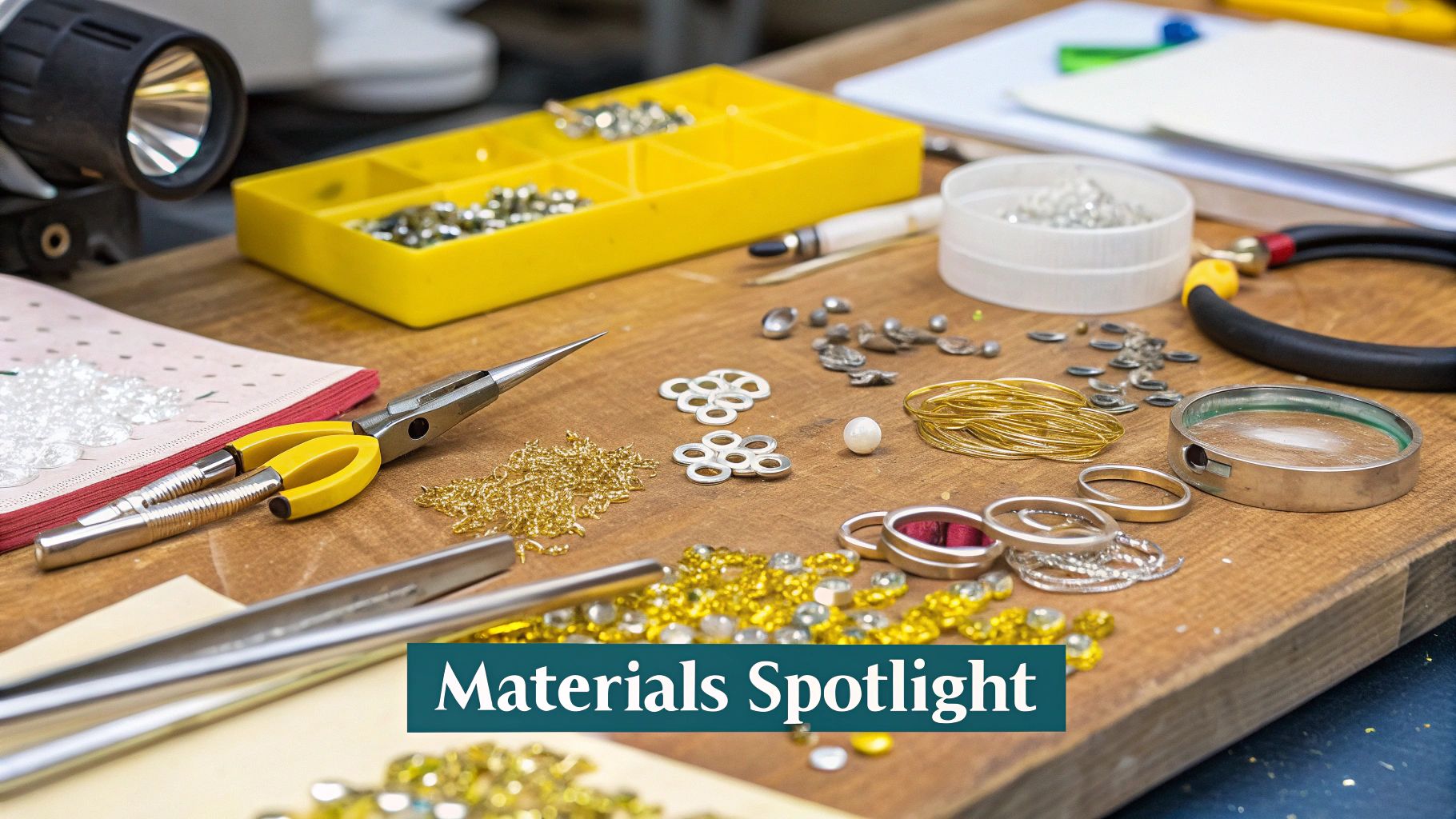
Picking jewelry that won’t tarnish is all about knowing what's at its core. Just like a chef knows the best ingredients make a meal unforgettable, the secret to a piece’s everlasting shine is the metal it’s made from. Let's dive into the champions of the jewelry world—the materials specifically chosen for their ability to fight off discoloration and stay brilliant.
These materials are your best bet for a collection that stays beautiful with minimal effort, making them a smart choice for both your style and your busy lifestyle.
The Everyday Champion: Stainless Steel
Think of stainless steel as the superhero of affordable, everyday jewelry. It’s a powerful alloy, but its real secret weapon is chromium. This element creates an invisible, self-repairing shield on the surface. If it gets scratched, this film instantly heals itself, blocking the oxygen and moisture that cause other metals to rust or tarnish.
This built-in defense makes it one of the most reliable choices for pieces you’ll wear day in and day out. Here’s why it’s a go-to:
- Hypoallergenic: It’s a fantastic choice for sensitive skin because it rarely causes irritation.
- Incredibly Durable: This metal is a beast, easily resisting scratches, dings, and corrosion.
- Affordable Luxury: You get that polished, high-end look without the hefty price tag.
Many of our pieces here at Precious Pulse, like our classic chains and minimalist rings, are crafted from 316L stainless steel for its top-tier quality and lasting shine. It’s how we make sure you get beautiful accessories designed for real life.
The Lightweight Powerhouse: Titanium
If stainless steel is a superhero, then titanium is an astronaut—impossibly strong yet surprisingly light. It’s famous for its incredible strength-to-weight ratio, which makes it comfortable enough to wear all day without ever feeling heavy. Just like stainless steel, titanium naturally forms its own protective oxide layer that guards against tarnish.
Titanium is biocompatible, which means it’s so non-reactive that it’s trusted for medical implants. That exact same quality makes it a brilliant choice for jewelry, since it won’t react with your skin or the environment around you.
Noble Metals: Gold and Platinum
Solid gold (14k and higher) and platinum are the undisputed royalty of the jewelry world. They belong to a group called noble metals, which are naturally resistant to corrosion and oxidation. Their chemical makeup is so stable that they simply don’t react with the everyday elements that cause tarnish in metals like silver and copper.
While these materials come with a higher price tag, their built-in immunity to tarnish is precisely why they’re the timeless choice for wedding bands and heirloom pieces meant to last forever. Learning more about choosing the best metal for jewelry can help you decide which material fits your budget and needs.
Understanding how different metals perform is key, especially when you're looking at materials prone to tarnish, like silver, where pieces such as these stylish silver glitter earrings require a bit more care. By choosing the right material from the start, you’re setting your favorite pieces up for a lifetime of brilliance.
How Plating Creates a Protective Shield
While some metals are naturally tough enough to go it alone, others need a little help to achieve that coveted, long-lasting shine. Think of plating as a high-tech force field for your jewelry—a micro-thin yet powerful layer of a non-reactive metal bonded to the surface.
This shield protects the base metal from the usual suspects: air, moisture, and skin oils that cause tarnish. It’s an ingenious process that transforms otherwise sensitive materials into durable, beautiful pieces. It’s also the secret behind the booming demi-fine jewelry market—valued at USD 3.33 billion—which uses advanced plating to offer incredible style without the solid-gold price tag. For a closer look at its impressive growth, you can explore these demi-fine jewelry market insights.
Common Plating Techniques Explained
Not all plating is created equal, and knowing the difference helps you read product descriptions like a pro. When you understand the craft, you can confidently invest in quality tarnish free jewelry.
Here are the most common types you'll run into:
-
PVD (Physical Vapor Deposition): This is a modern, vacuum-coating process that bonds a super-thin layer of metal to the base. PVD is famous for its incredible durability—it's often 10 times stronger than standard plating, making it exceptionally resistant to scratches and daily wear. This is the gold standard for long-lasting plated jewelry.
-
Gold Vermeil: For a piece to be considered true vermeil, it must have a sterling silver base coated with a seriously thick layer of gold—at least 2.5 microns. This isn't just a quick dip; that substantial coating is what ensures its longevity and luxurious finish.
-
Rhodium Plating: A go-to for sterling silver and white gold, rhodium is a member of the platinum family. It provides that bright, reflective white finish you love and offers fantastic protection against both scratches and tarnish. We break it all down in our guide on what rhodium plating is.
Understanding these techniques gives you a peek behind the curtain at the craftsmanship that makes the long-lasting finishes on Precious Pulse’s pieces possible.
Why You Should Choose Tarnish Free Jewelry
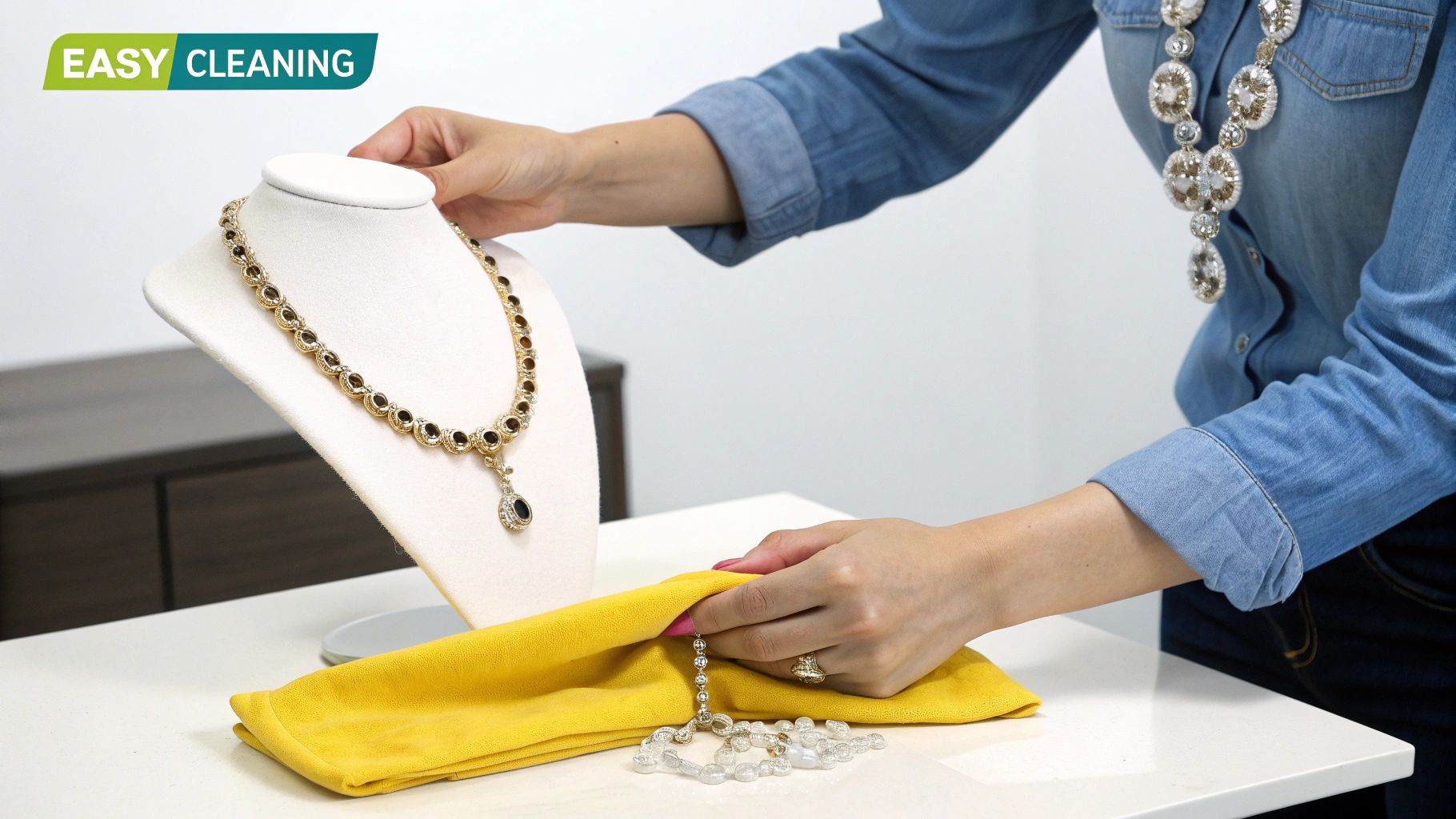
Choosing tarnish-free jewelry is about so much more than just keeping that brilliant shine; it’s a commitment to effortless style and genuine peace of mind. The biggest win? You get to break up with your polishing cloth. You can spend your time actually enjoying your favorite pieces instead of constantly maintaining them.
This lasting beauty also delivers incredible long-term value. When your jewelry looks brand new for years on end, you’re not spending money on frequent replacements. Think of it as a smart investment in a collection that stays as vibrant as the day you fell in love with it.
It's the kind of confidence that lets you wear your go-to necklace on a beach vacation without giving it a second thought.
A Gentle Choice for Your Skin
Beyond its durability, many tarnish-resistant materials are also incredibly kind to your skin. This is a game-changer, especially if you have sensitivities.
- Hypoallergenic Materials: Core metals like stainless steel and titanium are naturally hypoallergenic, which means they are highly unlikely to cause irritation or allergic reactions.
- Worry-Free Wear: This makes them a safe, comfortable choice for everyday accessories that are always touching your skin, from your favorite rings to your signature earrings.
The real luxury of tarnish-free jewelry isn't just how it looks—it's the beautiful simplicity it adds to your daily routine. You get to wear what you love, whenever you want, without hesitation.
At Precious Pulse, we design our pieces with this exact feeling in mind. We believe in blending sophisticated style with the practical durability your lifestyle actually demands.
Simple Care Tips for Long-Lasting Shine
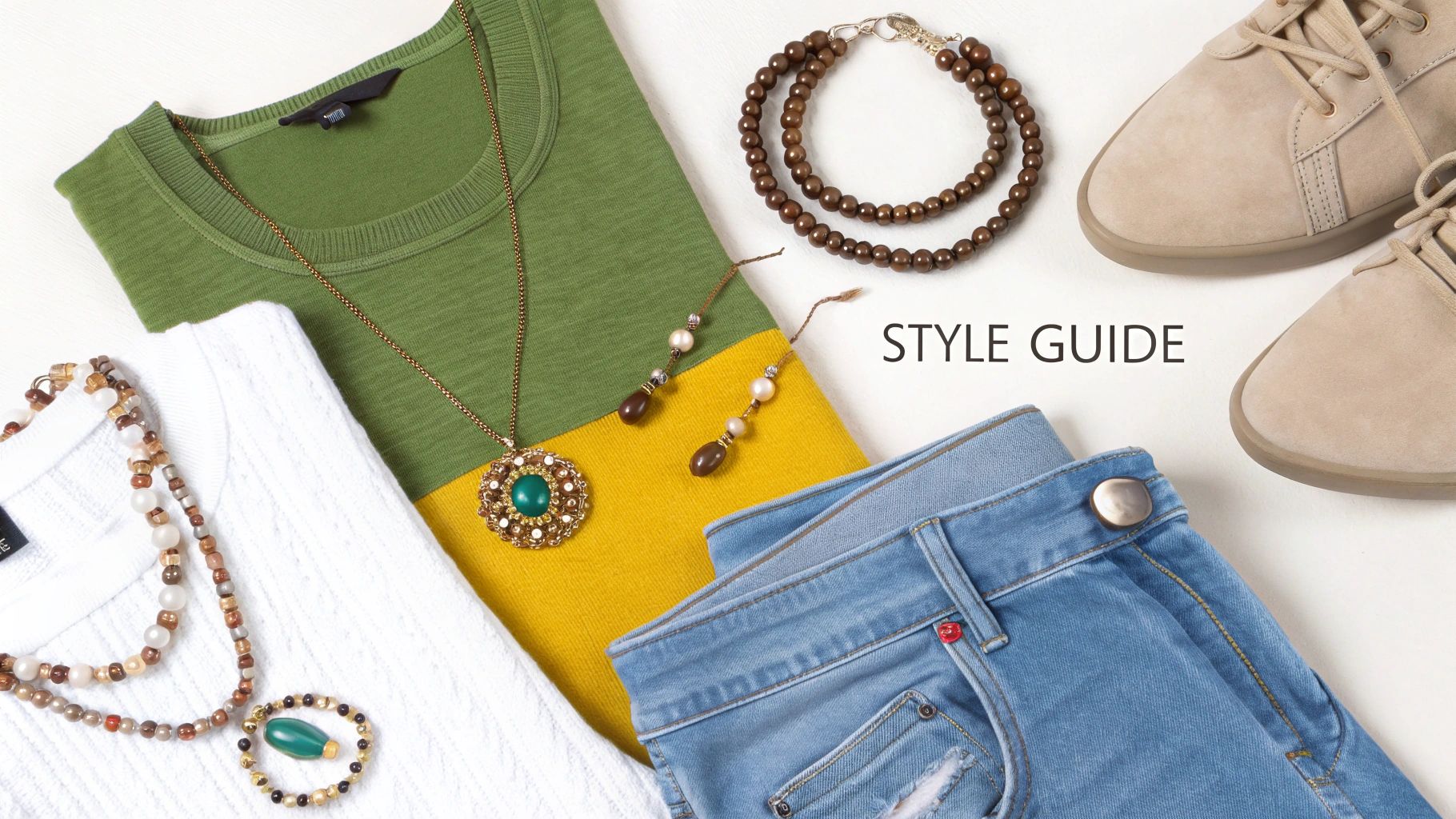
Sure, tarnish-free jewelry is refreshingly low-maintenance, but a little TLC can make all the difference in keeping that brilliant shine alive for years. Think of it less like a chore and more like a simple ritual to honor the pieces you love.
There’s a reason the stainless steel jewelry market is set to hit USD 3.75 billion by 2033—people crave beauty that lasts. This trend is especially strong with consumers under 35 who want stylish, hypoallergenic metals that fit their busy lives. You can read more about the rise of stainless steel jewelry.
Protecting Your Precious Pieces
To keep your jewelry looking as good as the day you got it, these easy steps are all you need. They take just a few minutes but pay off in the long run.
-
Gentle Cleaning Only: Forget harsh chemicals. A soft cloth, a drop of mild soap, and warm water are all you need to wipe away daily oils and residue without harming the protective finish.
-
Dry Thoroughly: After cleaning or an accidental splash, always pat your pieces completely dry. A soft, lint-free cloth will prevent water spots and keep the metal gleaming.
-
Avoid Harsh Chemicals: Your jewelry should be the last thing you put on. Hairspray, perfumes, and lotions can create a film that dulls the surface over time. And always take it off before hopping into a chlorinated pool or hot tub.
The golden rule for long-lasting shine? Store your pieces separately. Tossing them together is a recipe for scratches and tangled chains. A soft pouch or a lined jewelry box is the perfect home for your Precious Pulse jewelry, keeping each piece flawless.
How to Find Your Perfect Tarnish Free Jewelry
So, now you know what makes jewelry actually last. With that knowledge, you can finally shop with confidence, knowing exactly what to look for. Finding your perfect tarnish free jewelry really just comes down to reading the product descriptions and prioritizing quality materials from the start.
Keep an eye out for keywords like stainless steel, titanium, or PVD plating. These are your clues that you’re investing in a piece built to stick around for the long haul.
A piece’s ability to fight off tarnish is all about its core material or that tough-as-nails protective coating. Once you get that, it’s easy to tell the difference between jewelry that just looks good for a season and jewelry that’s made to handle every part of your life.
At Precious Pulse, we take the guesswork out of finding beautiful accessories that can keep up with you. Our entire collection is designed with real life in mind, blending effortless style with resilience you can count on.
We’re committed to using premium materials like 316L stainless steel with a robust PVD coating. This combo ensures every piece can handle your daily hustle without losing its shine, so you can wear our necklaces, bracelets, and rings without a second thought.
Go ahead and explore our collection of best-selling tarnish free jewelry today. It's time to discover that perfect blend of elegance and durability and find the forever favorites you'll never want to take off.
Your Questions Answered: The Truth About Tarnish-Free Jewelry
Navigating the world of jewelry can feel a little tricky sometimes. To help you choose your next favorite piece with total confidence, we’ve put together a few straightforward answers to the questions we hear most often.
Is Stainless Steel Jewelry Completely Waterproof?
Yes, for the most part! High-quality stainless steel like the 316L grade we use is incredibly water-resistant. The chromium in the metal creates a passive, protective layer that fights off rust and corrosion, making it perfect for real life. You can shower, wash your hands, and even swim without worry. That said, it's always a good idea to give your pieces a quick rinse with fresh water after a dip in the pool or ocean to wash away any chlorine or salt.
Can Gold Plated Jewelry Be Tarnish Free?
This one really comes down to craftsmanship—the quality of the plating and what’s underneath matters most. A thick, durable coating like PVD (Physical Vapor Deposition) over a solid base like stainless steel creates a piece that’s exceptionally resistant to tarnishing. On the flip side, a thin plating over a reactive metal like copper will likely wear down over time, eventually exposing the base metal and leading to tarnish.
The secret is in the process. At Precious Pulse, we use a robust PVD plating method on our jewelry to ensure you get a brilliant, long-lasting finish that can keep up with your daily life.
How Do I Know If My Jewelry Is Truly Hypoallergenic?
The best way is to look at the material list. Stick with pieces made from metals known for being biocompatible and gentle on the skin, like stainless steel, titanium, and platinum. These metals are extremely non-reactive and are the go-to choices for anyone with sensitive skin. Always check the product description to see exactly what you're getting.
Ready to build a collection of beautiful, durable accessories you can rely on? Explore the stunning selection of Precious Pulse Jewelry and discover your new favorite pieces today at https://preciouspulsejewelry.com.

